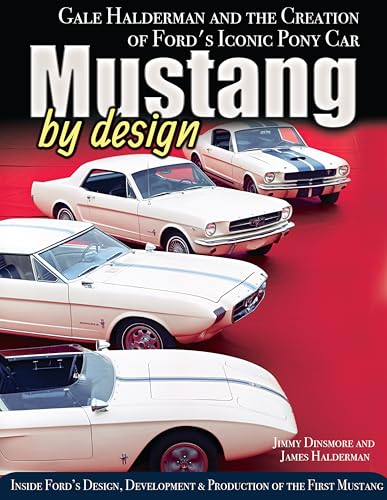I fully believe that the '71-73 Mustang size discussion originates back to Lee Iaccoca. In 2004, he stated this to Mustang Monthly:
"Well, Mustang got into the world of politics. When Bunkie Knudsen came in from GM during 1968, he and Larry Shinoda took the thing. At the stockholder meetings I'd have to listen to, 'Why do you take a winning formula like the Mustang, call it Boss, put a 429ci mill, have to spread it, [and] make it wider and lower? How could you be so dumb?' We got sucked in. Not me. This was Knudsen doing it. I think he wrecked the Mustang." Lee went on to say, "It got heavy. I thought, 'Whatever happened to my 2,200-pound Mustang?' They changed the whole feel and character. We wanted to keep it nimble and small."
Sound familiar? I have a feeling Lee quietly sounded off these statements long before this interview and became more and more vocal once the Bunkster was booted in 1970. That means that by the time the car went to launch, Lee could have been even looser with his tongue to spite Bunkie, at the risk of the car's success. Never underestimate someone to put their personal goals first over company interests when it involves creative decisions.
I would put a few dollars down that this is
exactly what happened and journalists jumped on the fresh gossip back in the day. Remember, Iaccoca was a brilliant
marketer. Any brilliant marketer
also knows how to smear their foes using the oxygen of publicity.
50 years later, these comments continue to get regurgitated by current-day classic car journalists working to meet their copy deadlines rather than take the effort to dig up the owner of a stock or mildly modified '71-73 to sit in and drive. When was the last time you've heard someone new to the '71-73 provide a fresh insight or opinion in a mainstream article? That's right, never. If it's simple magazine or internet influencer fluff, "who cares, right?" In the words of Harrison Ford: "...I got
paid!"
At any rate, I'm not convinced the
size or
weight alone put people off on the car back in the day (hey, weight didn't stop the LX-platform Chargers, it isn't exactly stopping the new 5-series either, nor is it stopping Model 3 Performance sales), but it was these factors
combined with the Mustang's first truly radical change in styling. It went from an all-American coke bottle to - for the Sportsroof - a shape heavily influenced by Italian GT styling cues. By comparison, a '69 Sportsroof retains enough DNA from its predecessors that it comes off as a
refinement of the original first-gen, not a
departure. Let's not forget Gale Halderman admitted that Bertone studio designs served as inspiration for the '71-73s.
Combine this with the "European-styling" ad campaign for the '71 with Sid Cesar Doing Characters That Would Get You Cancelled Today and you have a product that's saying "I'm not for you" to the person who wanted a '69 428 Cobra Jet a few years prior. Think of it similar to what the Mach-E's launch was saying to owners or potential owners of S550s. It was the Mustang's first departure from the norm and it bore the brunt of the hit - first from Iaccoca's personal vendetta filtered to journalists, and the journalist's comments distributed amongst the peanut gallery of commentators and onlookers forming their opinions without ever sitting in or driving one of these cars.
Ironically, as it was the first Mustang to bear the brunt of being radically different, I believe it softened the blow for the Mustang II, arguably the Mach E of 1974: A car that sold primarily on practicality for the masses with just enough of nostalgia glitter spread over the turd to encourage someone to buy it over a more boring label. Yet, as for the II, journalists continue to praise the little chitty chitty chit box to this day for being the "right car at the right time." Sorry, auto journalists, but if you're reviewing the same model of car, you can't play both the practical card and the emotional card if the car changes identity 10 years down the road. Pick a lane and stick with it.
At any rate - 50+ years later - the legacy of pissing on the '71-73s continues because it is easy to spew nonsense from an armchair (or a desk) without any first-hand experience. It is also easy for others who have even less experience to assume that person knows what they're talking about, which is why all the "big Mustang" comments continue through into an era where
everything weighs as much as an old ladder-frame truck, package sizes and SUVs have influenced sedans into having rooflines higher than our heads, and trucks are now the size of small buildings in a self-defeating automotive arms race that needs to effing stop before road rage turns into out into an all-out war.
Incidentally, the same thing is going on right now with automotive journalists and social media mouthpieces
consistently claiming the new J250 Land Cruiser is "smaller" than it's predecessor. Hardly - by exterior dimensions, it's the same or fractionally larger; the
interior is smaller. Only Jason Cammisa has made this distinction and he's admonished all of his peers for screwing it up (as he often does). Nevertheless, watch as time allows the more prevalent (read = copy pasted and paraphrased and/or AI generated) "smaller" narrative to erroneously sear itself into the legacy of the J250 Prado-based LC here in the States, 20 years in the future.
-Kurt














































